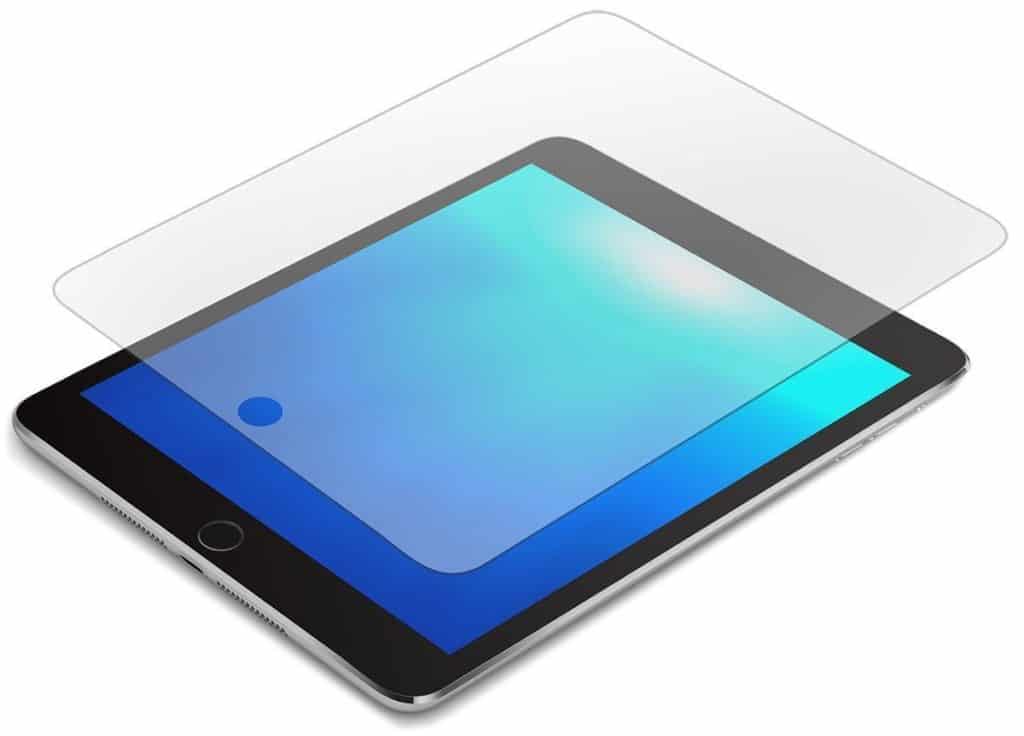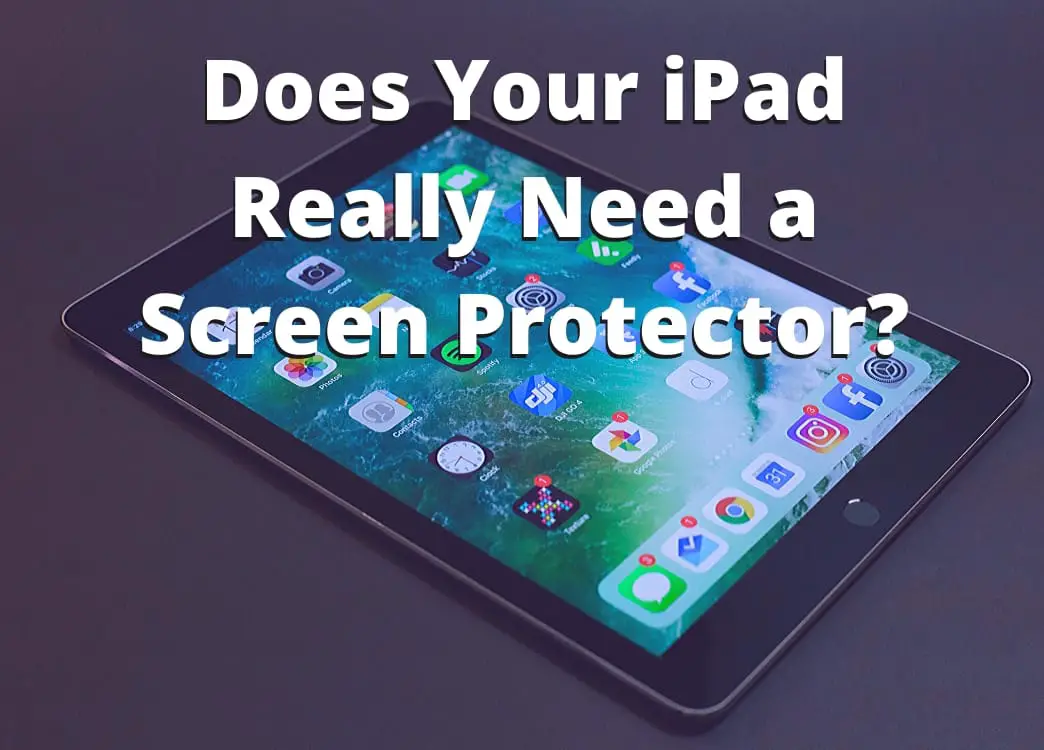If you have ever owned an iPad or thought about purchasing one, you know how expensive they are. When you invest in a piece of technology, you want to make sure you are protecting it the best that you can. There are ultimately many layers of protection you can get for devices; one is a screen protector.
So, should iPad have screen protector? Yes, an iPad should have a screen protector. While the screen protector will not protect the device from drops or a broken screen, it will protect the screen from unnecessary scratches. If your screen does shatter for some reason, the protector will also not allow the glass to fall out, which could create a dangerous situation.
This article will explain why a screen protector is essential and why you should get one for your iPad.
Why Use a Screen Protector?
If your iPad is going to stay in one location with one user, a protector is not always necessary. However, the likelihood of that happening is relatively low. Most people take their iPads to school, work, church, or any other destination they may visit and want to stay connected.
When you travel with your iPad, or if you have children that will be using or around the iPad, a scratch will probably occur at some point in time. Scratches can affect your ability to view the screen of your iPad adequately. Tony Bradley of PC World explains in his article Six Ways to Protect Your Apple iPad that, although the iPad glass is extremely durable, it is not immune to being scratched, which is why a screen protector is a wise addition.
How Do You Use a Screen Protector?
Screen protectors are extremely easy to use and quite economical. Screen protectors are made of thin sheets of plastic or tempered glass. There is adhesive on one side of the sheet that gets applied directly to the iPad. Once the screen protector is in place, you will barely even notice it is there.
Plastic or Glass
When looking at protectors, you will notice there are two kinds you can purchase: plastic or glass. Both are designed to serve the same purpose: protecting your iPad screen from unnecessary scratches. Both also adhere to the screen in the same manner. So, you may be wondering what sets them apart.
Plastic Screen Protector
Plastic iPad screen protectors are made of a thin plastic that is very easily scratched. While the protector will do the job of keeping scratches off the glass screen of your device, it may drive you crazy to look at scratches that appear on the screen protector.
The cost of plastic screen protectors is also much lower than glass. So, you must take into consideration the length of time the screen protector will work before it needs to be replaced. If you don’t mind minimal scratches in your line of view or frequent replacement, this may be a good choice for you.
Glass Screen Protector
Glass protectors are made of an extremely thin layer of tempered glass. Typically, when the screen protector is on the iPad, you won’t be able to tell the difference between it and the actual screen. Tempered glass does not easily scratch, so you can likely expect the screen protector to last for quite some time.
The cost of a tempered glass screen protector is more than plastic; however, if you are looking for a screen protector that doesn’t require frequent replacement, it is worth the extra money. One notable difference with a glass protector is the thickness of the sheet. Glass is typically a bit thicker than plastic.
Which is Best: Glass or Plastic?

Once you have decided to purchase a protector for your iPad or iPad pro, you will likely want to choose something durable and scratch-resistant. If you are searching for durability, it would likely be best to go with a tempered glass screen protector; however, if your budget won’t allow the purchase of a glass screen protector, there are several highly rated plastic screen protectors as well.
Best Plastic Screen Protectors
- Tech Armor Anti-Glare/Anti-Fingerprint Plastic Film Screen Protector
- JETech Screen Protector for iPad
- iCarez Anti-Glare Matte Screen Protector
Best Glass Screen Protectors
- JETech Screen Protector for iPad Air 3 (10.5 Inch 2019 Model) and iPad Pro 10.5 (2017), Tempered Glass Film, 2-Pack
- New iPad 9.7″ (2018 & 2017) / iPad Pro 9.7 / iPad Air 2 / iPad Air Screen Protector, SPARIN Tempered Glass Screen Protector
- (2 Pack) Supershieldz for Apple iPad 9.7 inch (2018 and 2017), iPad Pro 9.7-inch, iPad Air 2 and iPad Air 1 (9.7 inches) Tempered Glass Screen Protector, Anti Scratch, Bubble Free
- amFilm Glass Screen Protector for iPad 9.7 6th Gen, 5th Gen, iPad Pro 9.7, iPad Air, Air 2, Tempered Glass, Apple Pencil Compatible
Before purchasing any screen protector, you need to make sure it meets the specifications of your iPad. Please don’t think that one size will fit all models. As iPads are updated, the screen dimensions often change. You may also notice that most of the options come in packs of two, so you will often have a back-up if necessary, or you can outfit two devices with one order.
How to Apply a Screen Protector to Your iPad?
Placing the protector onto your iPad is something that will take care and patience. While it isn’t something that will take hours to do, you want to make sure you can take your time to place it appropriately. The last thing you want is a crooked screen protector with air bubbles underneath.
Follow these steps to place your screen protector onto your iPad:
- Clean the screen of your iPad with a damp cloth and clean water.
- Place the sheet protector at either the bottom or top edge of the iPad.
- Slowly peel the backing from the protector as you carefully lay it on the iPad.
- Use the air bubble tool provided to smooth the screen out as it lays on the iPad.
- Wipe the sheet protector with a damp cloth.
If you are uncertain about how to apply the screen protector, you have the option of visiting an Apple store for support, or there are several tutorials online both in video and photograph form. The above steps were provided by Brent Zaniewski in his tutorial about applying a protector to an iPad.
Air Bubbles
Unfortunately, putting a screen protector on, although easy, can be quite a tedious project because of the air that can get trapped under the protector. Therefore, it is so important to take your time and smooth the protector as it lays on the screen. If your protector doesn’t come with a tool to help smooth out air bubbles, you can always use a credit card to do the same thing.
Here's a handy video i found which shows you how to install a protector, bubble free:
Removing the Protector
Screen protectors are very easy to remove from your device. If you notice air bubbles or a crooked protector, you can gently remove the protector and try again. However, you must be aware of the lint that could attach to the screen protector adhesive.
If you remove a screen protector to reposition it on the iPad or iPad pro, you may find the adhesiveness is not as strong as it was the first time you placed the protector. You will likely see the corners of the protector begin to peel up. This doesn’t impact the function of the protector, but it may shorten the length of time it will be beneficial to you.
Final Thoughts
Putting a screen protector on your iPad is not a requirement, but it can help prolong the quality of your iPad screen. There are many protector options on the market, so you need to make sure you choose one that is best for your needs, whether that be glass or plastic. Also, make sure the protector is matched to the size of your device to ensure full protection of the screen.
We also want to thank the SMC Premier team with their help and insights on this article.


